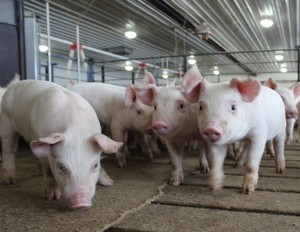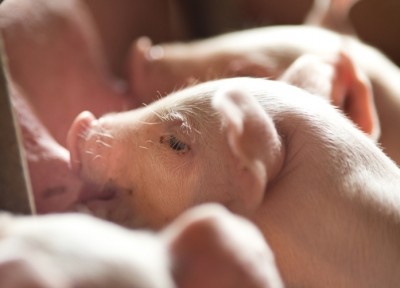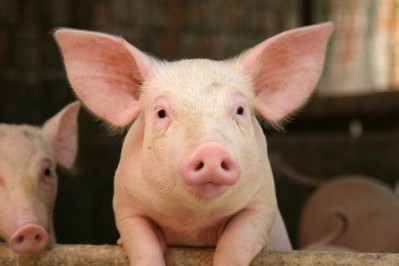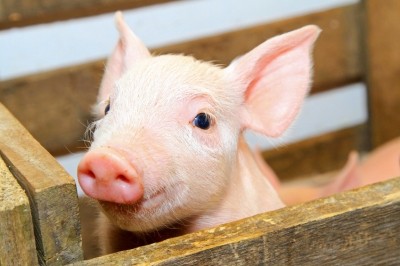Antimicrobial and growth boost observed from MCFA and probiotic use in piglets
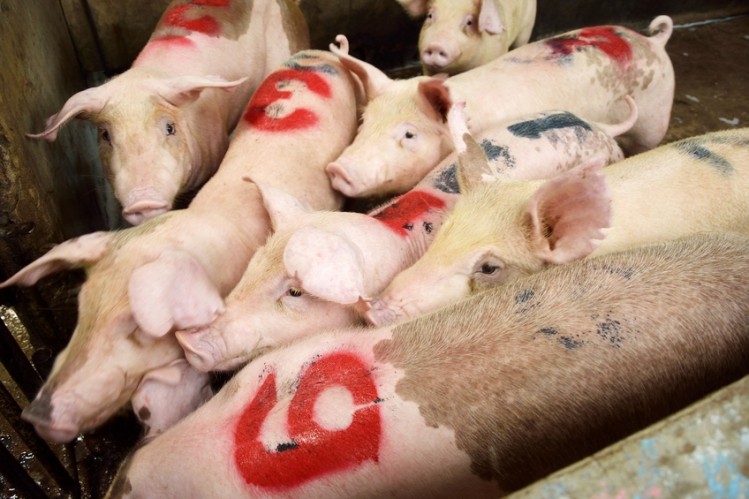
The aim of the study, published in Livestock Science, was to check the possible synergistic effect enhancing the positive activity of caprylic and capric acids mixed with the E. faecium preparation on piglet health and performance, intestinal microflora, short-chain fatty acid (SCFA) content and the structure of mucosal epithelium of the small intestine.
The scientists, based, in the main, at Poland’s National Research Institute of Animal Production, found E. faecium lowered the acidity of the small intestine and colon chyme but raised the content of acetic acid in cecum. They also saw it increased crypt depth and villi width.
They found caprylic acid had moderate antibacterial activity against E. coli, while the probiotic had a weak effect on E. coli but strong activity against Clostridium perfringens.
Study design
The effect of the fatty acids and or probiotic on piglet performance, intestine structure, and microbiology was estimated on 271 piglets of Polish Landrace.
The team said they assigned piglets to three groups with eight litters in each.
The first group was fed a standard feed mixture (control). The same mixture supplemented with 0.3% of caprylic (octanoic—C8) or 0.3% of capric (decanoic—C10) acids was given to groups II and III, respectively.
In each group, half the animals received the probiotic E. faecium added in the amount of 0.35×109 CFU per kg feed - the probiotic used consisted of dehydrated cells of E. faecium NCIMB 10415 (EFSA, 2013), they reported.
The researchers said the piglets were fed with prestarter diets from 7 to 21 days of life and with starter diets from 22 days to the end of the experiment, at 70 days of life. The team said feed and water were available ad libitum.
The animals were weaned at 28 days of life. At 60 days of life, six piglets from each subgroup were slaughtered and their intestines were investigated, said the authors.
The team measured the length and weight of particular parts of intestines, and also examined the structure of the ileum mucosal epithelium. They also analysed the acidity of digesta and short-chain fatty acid (SCFA) content of chyme from jejunum and cecum, and estimated Escherichia coli and Clostridium perfringens counts in those parts of the intestines as well.
Results
The Polish researchers noted capric acid improved piglet body weight gain after the 28th day of life. The probiotic lowered the weight gain from 28th to 56th day but increased it later, they added.
The team did not observe any significant differences in piglets’ body weight gain during the first four weeks of the experiment between birth and weaning. In the second period of the experiment - from 28th to 56th day of the piglet's life – they saw that capric acid significantly improved the body weight gain by about 13% when compared to control group and also by 9% in comparison to caprylic acid group.
In the third stage of the experiment, 56th–70th day, the authors reported that capric acid improved piglets’ performance better than caprylic acid - by 12% - and these piglets gained better weight by 11% than control group.
Overall, they said, capric acid gave better results than both control and caprylic acid groups and increased the daily body weight gain by 8% and 7%, respectively.
“Differences in feed intake and feed utilization were not significant through the whole experiment, but it was noticed that piglets receiving MCFA consumed more feed mixture and utilized it better.
“Both acid additives lowered piglet mortality, but this reduction was especially apparent in the case of capric acid. The percentage of dead and culled piglets in the group fed with mixture supplemented with capric acid amounted to 2.2% in comparison to piglets supplemented with caprylic acid (4.5%) and control piglets lacking any supplement (6.7%)," they wrote.
Probiotic impact on growth
The significant effect of probiotic additive appeared after the fourth week of the piglet’s life, said the team.
During the second period of the experiment - from 28th to 56th day of the piglet’s life - they found the probiotic significantly lowered the weight gain. However, in the last experimental period, 56th–70th day, they saw the probiotic supplement significantly improved the piglets’ performance, and these animals gained better weight, by about 15% in comparison to those fed with no additive, said the Polish researchers.
There was no difference between the control and probiotic supplemented group in terms of feed intake, they added.
But they found the piglets receiving the dietary probiotic "utilized the feed mixture more effectively between the 56th and 70th day of age, and they used 17% less feed for 1 kg of body weight gain when compared to control animals."
And supplementation of the feed mixture with the probiotic reduced piglet mortality, confirmed the research group.
Fatty acids and intestinal changes
The fatty acid supplements changed the acidity of the content of small intestine, reported the authors.
While caprylic acid increased, capric acid lowered pH when compared to the control animals.
There were no significant changes of volatile fatty acid (VFA) content in the tested parts of the intestines after the supplementation of the feed with acids except a small reduction of valeric acid in cecum.
The team concluded the supplements used had only limited effect on mass and length of particular parts of the intestinal tract.
They said capric acid lowered the length of jejunum and mass of cecum in comparison to control group. The team found the acids had no significant effect on the epithelial structure of the intestine.
In terms of the probiotic, they said it increased the pH of the duodenum and further parts of the small intestine and colon. It induced a highly significant increase in the amount of acetic acid and a less distinct hike in the amount of isobutyric acid in the cecum, said the authors. It also significantly increased the villus width and crypt depth, added the team.
“The increased amount of acetic acid in piglets’ colon after supplementing feed with E. faecium was also found by Strompfova et al. (2006). It is known that acetic acid is the main SCFA produced from the dietary fiber in the cecum by microbial fermentation (Friend et al., 1963). Therefore, it can be assumed that E. faecium has a significant effect on fiber digestibility.
“Increased apparent fiber digestibility after supplementing piglet feed with probiotic containing Lactobacillus and Enterococcus was found by Veizaj et al. (2008). Perhaps it is a result of changes in the large intestinal motility.
"The stimulation of SCFA's production in the large intestine with probiotics alters the large intestinal motility to hold and mix the digesta (Ohashi and Ushida, 2009). This may promote a higher fiber digestibility. Higher content of isobutyric acid in cecum digesta of piglets of the group receiving [a] probiotic may indicate more intensive degradation of protein because this acid is produced from amino acid valine by bacterial deamination (Arkowitz et al., 1994)," commented the researchers.
Antibacterial effect
The team found, in comparison to control group with no additives, dietary caprylic acid significantly lowered the amount of E. coli in both the jejunum and cecum, but the number of Clostridium was significantly reduced by this acid only in the cecum. The capric acid also reduced the population of E. coli and Clostridium, but the differences between control and caprylic groups were not significant, noted the researchers.
The team also observed antibacterial efficiency in terms of the probiotic supplement used. They said it lowered, but only slightly, the number of E. coli in the jejunum and cecum but was highly effective in limiting the number of Clostridium in both analyzed parts of the intestines.
Source: Livestock Science
DOI: http://dx.doi.org/10.1016/j.livsci.2016.08.002
Title: Medium chain fatty acids (MCFA) and/or probiotic Enterococcus faecium as a feed supplement for piglets
Authors: E Hanczakowska, M Świątkiewiczb, M Natonek-Wiśniewskac, K Okońd
